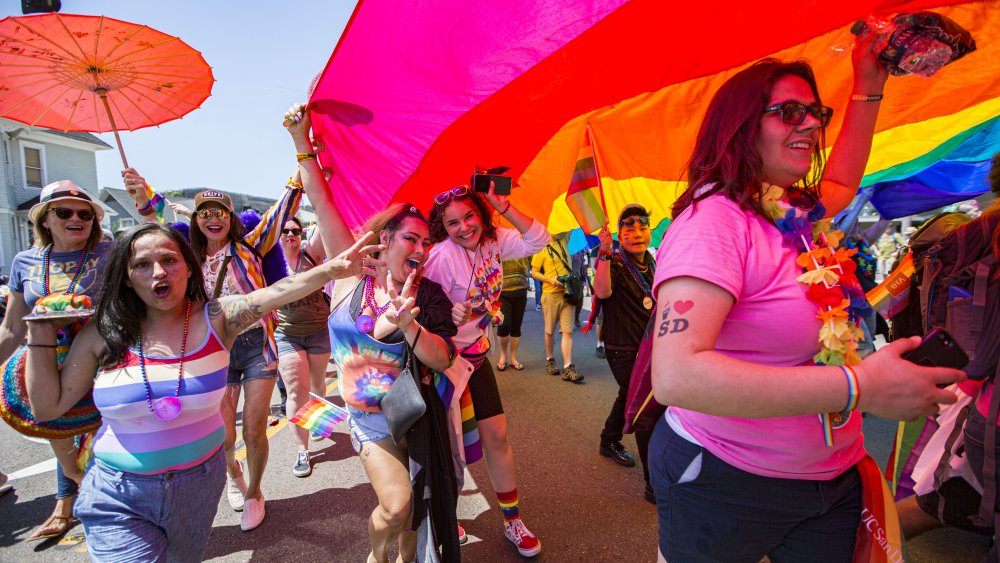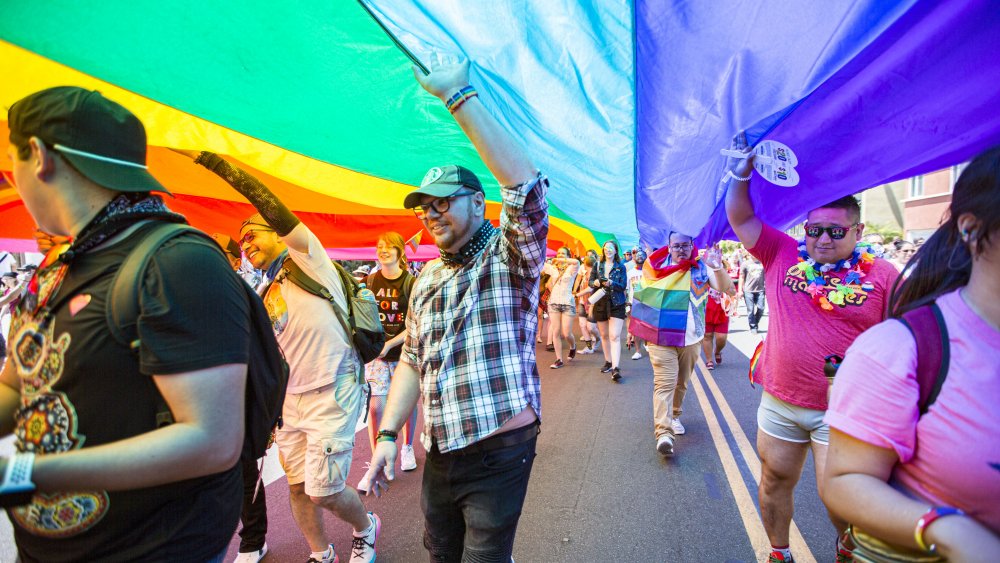What Do The Colors In The Pride Flag Stand For?
Flags have a hallowed place in human history. Usually made of cloth, they signify all manner of things: something to follow in the midst of battle. Symbolic identity for a group, large or small. (Even Vatican City has a flag, and it's only 110 acres.) Flags can represent ideals (the Stars and Stripes: freedom for all) or tyranny (the Confederacy's Stars and Bars: slavery and oppression). At summer camp we might play "Capture the Flag," and before sporting events we ask in song if our flag still flies over Fort McHenry.
Each June marks Pride Month — the month in 1969 of the Stonewall Riots in New York City, often credited with the birth of LGBTQ awareness and rights in the United States. Encyclopedia Britannica tells us that the pursuit of gay rights in the U.S. dates back to at least 1924, the year the Society of Human Rights was founded in Chicago. But by 1978, San Francisco had California's first openly gay elected official, Harvey Milk. It was Milk — again, from Britannica — who approached Gilbert Baker, an artist and activist, to create the flag symbol for the Gay Pride Parade on June 25.
Each colored stripe is representative
Gilbert said, "Our job as gay people was to come out, to be visible, to live in the truth, as I say, to get out of the lie. A flag really fit that mission, because that's a way of proclaiming your visibility or saying, 'This is who I am!'" He saw the flag as a symbol that came from the sky — a rainbow, yet with correlations to the nation's flag as well. "We needed something to express our joy, our beauty, our power. And the rainbow did that," Baker told CNN.
Baker originally designed the flag with eight stripes of different colors: Hot pink represented sex; red stood for life; orange symbolized healing; sunlight was present in the yellow stripe; for nature, green; turquoise stood in for art; indigo spoke of harmony; and violet proclaimed spirit spirit. Baker sewed it by hand, all 30 feet by 60 feet of it. The wind caught it, the flag flew, and "I saw immediately how everyone around me owned that flag. I thought: It's better than I ever dreamed," said Baker to CNN.
Once accepted — it became official in 1994 — the flag was simplified, reduced to six stripes instead of eight. Pink and turquoise were removed; indigo was replaced by blue. "We're an ancient, wonderful tribe of people," said Gilbert, who died in 2017. "We picked something from nature. We picked something beautiful."

